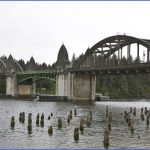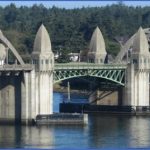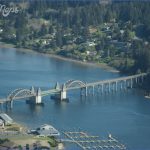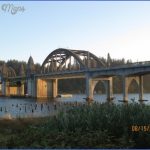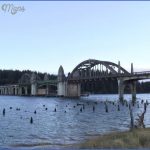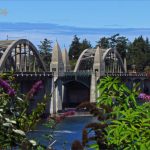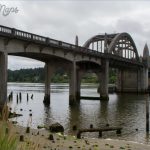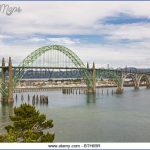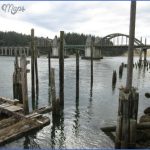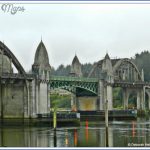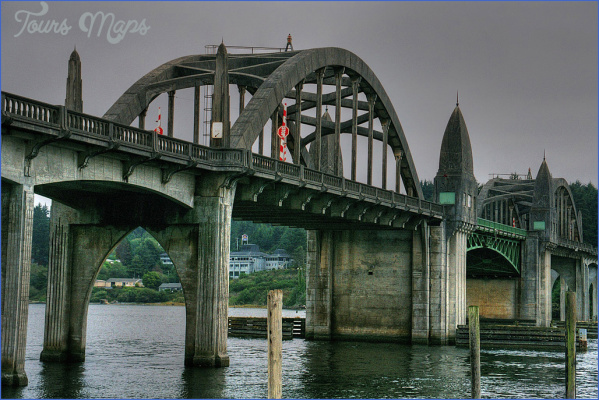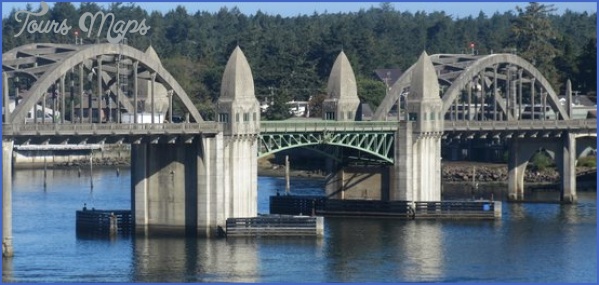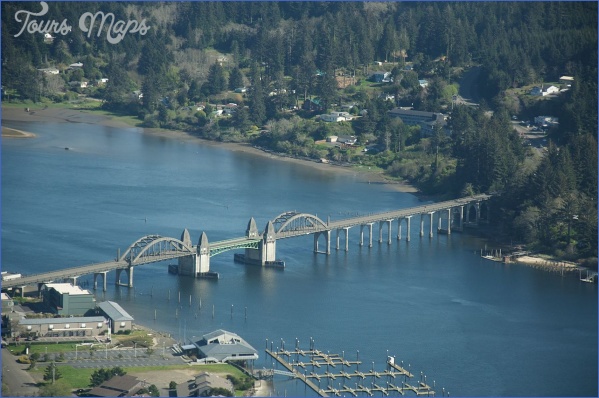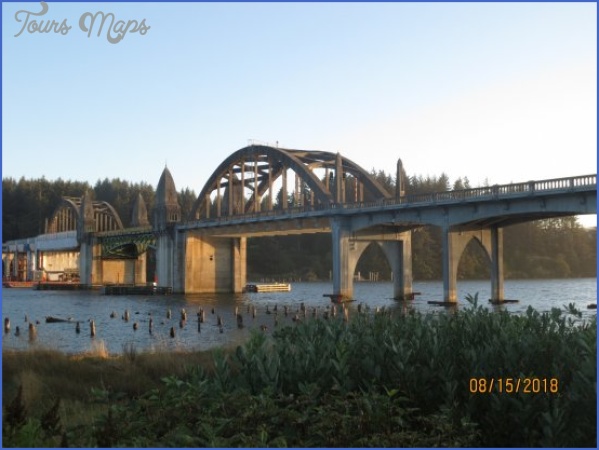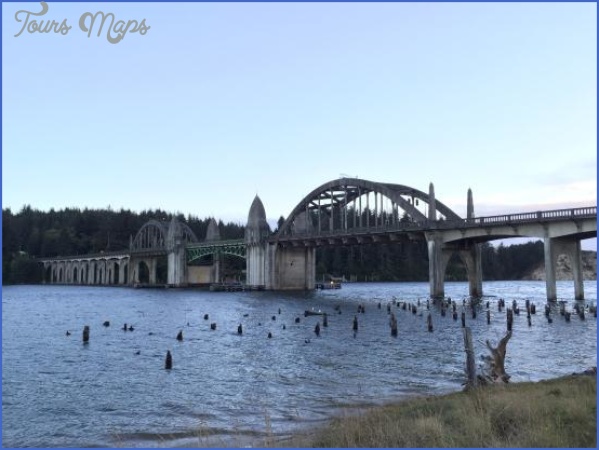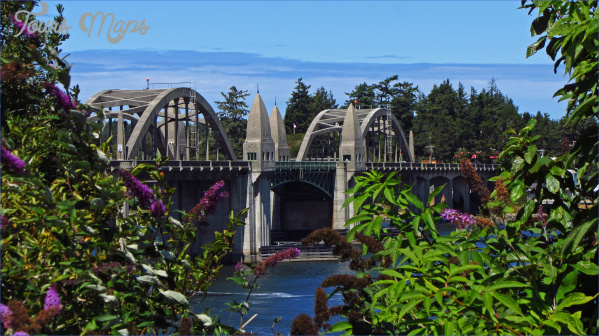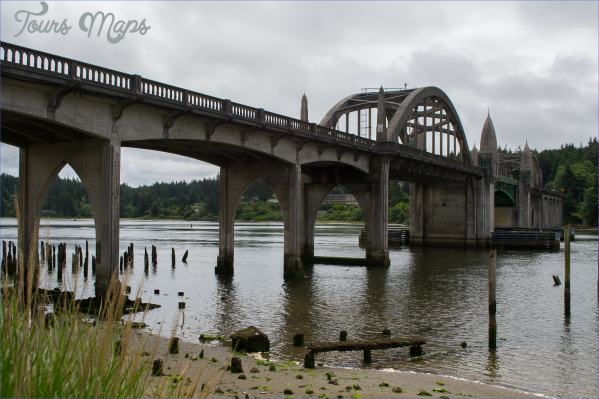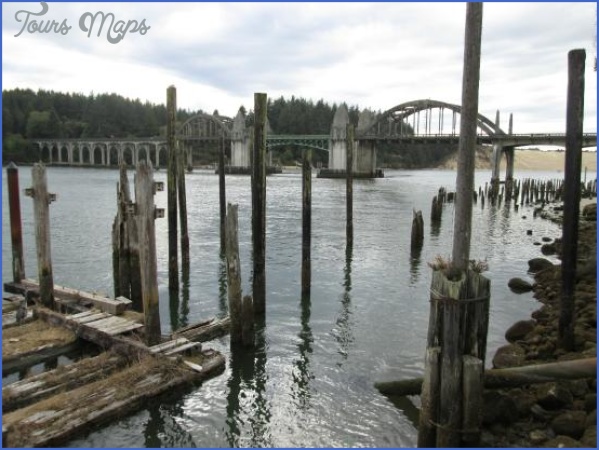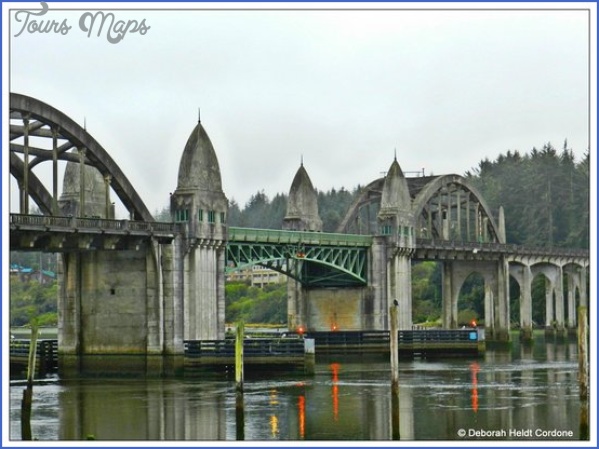SIUSLAW RIVER BRIDGE MAP
Crossing Siuslaw River, Florence, Oregon Designer/Engineer Conde B. McCullough Completed 1936 Span 140 feet (44 meters)
Materials Concrete, steel Type Double-leaf bascule
The Siuslaw is one of five Depression-era bridges that grace the Oregon Coast Highway.
U.S. Route 101, known in Oregon as the Oregon Coast Highway, is Conde B. McCullough’s masterpiece. Eleven major bridges of his creation, built during the 1930s, cross its route in a panoply of styles and materials that was leagues ahead of other structural designs in the United States at that time. In addition to being diverse, his designs were innovative, economical, and visually pleasing. His Oregon Coast Highway crossings, including the three seen here, represent his work at the pinnacle of his career.
How did McCulloughborn in the Dakota Territory, educated in Iowa, and with no known trips abroadobtain his far-reaching understanding of bridge design? Some attribute his breadth of knowledge to a lawsuit. After graduating from Iowa State College in 1910, McCullough worked for engineer James Marsh, whose Des Moines firm was experimenting with reinforced-concrete designs. McCullough subsequently was hired by the Iowa State Highway Commission, which, like many state agencies, was reevaluating its highway programs in light of the exponential popularity of automobile travel after World War I. In 1912 Marsh was sued for patent infringements. The state charged McCullough with collecting evidence600 pages of documentation, 150 exhibits, and 15 models on concrete bridges from the Romans onwardthat, by 1916, won the suit for his former employer. During this process, McCullough acquired in-depth knowledge, a lifetime’s worth, about concrete’s capabilities. The Oregon Coast Highway has one of the great, perhaps unequaled, collections of bridges in the United States…. That McCullough built ten major bridges on it, no two alike, in the space of eight years, during the height of the Depression, is nothing short of amazing.
SIUSLAW RIVER BRIDGE MAP Photo Gallery
ERIC DELONY, CHIEF, HISTORIC AMERICAN ENGINEERING RECORD, IN CONVERSATION WITH THE AUTHOR, 1997
In 1919, the first year of McCullough’s sixteen-year stint as Oregon’s state bridge engineer, Oregon imposed a tax on gasoline, the first in the nation, to build and maintain its highways and bridges. Later, he was armed with New Deal monies: in 1934 the federal Public Works Administration funded five major bridges along Route 101 to provide jobs and attract future tourism revenue; after the five spans were built, tourism jumped 72 percent in one year.
Always practical, McCullough typically worked in concrete, which was less costly than steel and better weathered the coastal climate. Concrete, capable of taking on nearly any form, also sparked his aesthetic imagination. He exploited the material’s expressive possibilities in exuberant designs that draw on art deco, Egyptian, and Gothic styles. “Jewel-like clasps in perfect settings, linking units of a beautiful highway” is how he described his bridges to the Coos Bay Times in 1936.
The Yaquina Bay Bridge (1936) in Newport, Oregon, combines steel and concrete arches, with a 600-foot (183-meter) main span.
The Siuslaw River Bridge epitomizes his eclectic structural and design vocabulary. It is a 1,568-foot (478-meter) concrete bridge with a double-leaf 140-foot (43-meter) bascule span at its center that, opened, provides a 110-foot (34-meter) clearance over the river. The center span is flanked by two tied concrete arches, each 154 feet (47 meters) long. The bridge’s pylons, bridge houses, bracketed balustrades, and approach arches are enhanced with sunbursts and other ornamental patterns. The bridge was built by the Mercer-Fraser Company of Eureka, California. Conde Balcom McCullough (1887-1946) transformed the Oregon bridge system into a national showcase. As Oregon’s state bridge engineer from 1919 to 1935, McCullough oversaw the construction of hundreds of custom-designed spans. He himself designed twenty-five major ones. Eleven of his Oregon Coast Highway crossings were named to the National Register of Historic Places in 2005. His favorite bridge, the Coos Bay Bridge (1936), seen below, was renamed in his honor in 1947.
The Rogue River Bridge (1932) at Gold Beach, Oregon, was the first in the United States to utilize prestressed concrete.
The 1906 earthquake, World War I, and the Depression, coupled with opposition from those who thought the bridge would ruin the beauty of the Bay Area, delayed its construction for half a century. Ultimately, the $27 million bridge was delivered only five months after its due date and $1.3 million under budget. For his efforts, Strauss received $1 million and a lifetime bridge pass.
Maybe You Like Them Too
- Explore Doncaster, United Kingdom with this detailed map
- Explore Arroyito, Argentina with this Detailed Map
- Explore Belin, Romania with this detailed map
- Explore Almudévar, Spain with this detailed map
- Explore Aguarón, Spain with this detailed map


